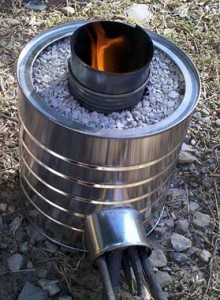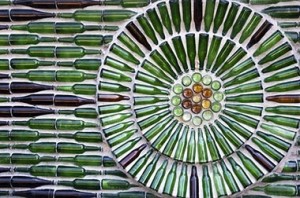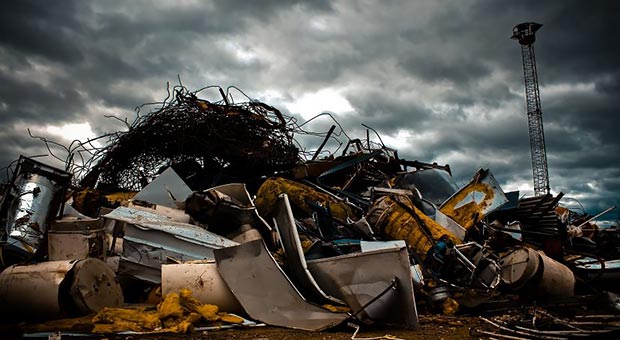Disasters come in many different forms and levels of intensity, but one common theme they all share is the destruction they leave in their wakes. Whether it’s a hurricane, tsunami, or tornado, the once civilized land will turn into a field of debris, wreckage, and trash.
When you open your shelter doors on the day after SHTF to find an apocalyptic wasteland, it will be easy to become discouraged and dismiss your surrounds as remnants of a time gone. You’ll see destroyed homes and buildings, toppled infrastructure, and heaping piles of nothing more than garbage. You might look out feel as hopeless as the area around you appears.
When every drop of water, ounce of food, and night of sleep matters, nothing can be considered waste. And that is where you have to change your mindset, starting now! If you find yourself in a survival situation, no matter how desperate you become or desolate your surroundings, eliminate the existence of trash in your mind.
You’d be surprised at the nearly endless amount of possibilities to recycle and reuse what could easily be dismissed as trash. Let’s see a few objects and materials that are likely to remain in abundance after a disaster that could be used for a variety of survival needs. But your very first step is to start thinking outside the box and unconventionally.
Until then, look at any weaknesses you may have in your home preps now, and see how you could save money by refurbishing instead of replacing. When SHTF and you, your property, and your possessions start taking some hits, you’re only choice will be to use what you find around you to make quick fixes to a multitude of problems.
Common Items and How to (Re)Use Them
1. Tin cans – Tin cans (usually made of aluminum) can be recycled into a variety of tools. They will be in abundance when SHTF, as many people will have a plenty of them after consuming their food supplies.

If you’re bugging out and camping somewhere new each night, you know how useful would be a rocket stove made from those used tin cans.
Also, tied together along a string (think the back of a newlywed’s limo), tin cans make an effective primitive alarm system.
A tin can alarm may be the difference between a run in with a hostile threat or hungry animal and a peaceful night’s sleep.
From there, the cans can be shaped back into a flat surface, essentially turning them into sheet metal.
Flattened cans could be used for paneling a variety of surfaces or cut into different tools and blades.
2. Corrugated steel – Continuing the theme of sheet metal, corrugated steel is one of the most commonly used forms of sheet metal for covering primitive structures around the world. It lasts a long time, is resistant to the elements, and is sturdy and flat. Corrugated steel can be used to help stop a leaky roof, fortify the outside of a home, or serve as the material for an entire structure.
3. Paper/Cardboard – Basically anything that comes packaged in paperboard or corrugated cardboard can be burned. It makes great kindling for fires and also acts as emergency insulation in extreme cold conditions. It would be easy to fill your house up with paper and cardboard with the amount of packaging the average household discards.
While you should consider saving a good quantity of paper and cardboard for fire kindling and other emergency uses, don’t go overboard. Also keep in mind that certain dyes, inks, and glosses can emit dangerous toxins when burned, so be careful what you put in the fire and what you use for cooking.
4. Steel drums – 55-gallon steel drums are great survival tools. They can be used as an outdoor burn barrel for both heating needs and incinerating unusable debris. They can also be fashioned into a homemade blacksmith forge, barbeque grill, or distillation pot, depending on the specs of the drum. Also consider 55-gallon plastic drums, as they can be valuable for storing potable water, fuel, and dry goods.
5. Glass containers – Glass containers and bottles can be recycled to be repurposed. Glass is one of the best vessels for keeping food and liquids sanitary and fresh, and many varieties of glass container offer more airtight lids than their plastic counterparts.

Anything with a tight-fitting lid can be reused to store both dry and wet food products, along with other various goods and supplies.
Glass jars can also be used to make candles and oil lamps for DIY low-cost lighting.
You could also use glass bottles to build houses or greenhouses, and that’s not a joke. Actually, more than 50 years ago, Alfred Heineken designed the wobo bottle which he called “the brick that holds beer”, and was used also when building bottle walls and houses.
6. Automobiles – Cars and trucks are made up of a variety of components that can be repurposed for many different survival uses. If an environmental disaster tears across a landscape, most of the cars and trucks will be put out of commission.
However, they will retain their tires, engines, interiors, and body paneling regardless of the hell they go through. Most of these parts can be reused in one way or another.
Tires can be used to build earthen walls for defense or raised planter boxes for homegrown produce. Transmission and engine oil can be used as lubricant and burned as fuel for heat and lighting. The cushioning and fabric of seats can be used in emergency shelter building or to help insulate a drafty home.
A car itself can be flipped over and left along a road or path (that is, if you can move it) as an enemy deterrent. Again, it’s all about thinking outside the box and finding a use for everything.
7. Tarps/Plastic sheeting – Tarps and plastic sheeting are often recommended for carry in any bug out bag. They make great ground coverings, serve to make a primitive tent, and can be suspended as a makeshift hammock.
Tarps/sheets can also be used to transport goods, wrap food products or fresh game, collect water, radiate heat from a fire into a shelter, or be worn as insulation or a rain poncho.
These are just a few ideas to get your brain start thinking of sustainable survival. You may live a privileged life now, but when SHTF you may have no choice but survive on what you once considered garbage.
The list above is by no means comprehensive; it only represents a few items that will likely be common after a disaster that can be repurposed to help you survive. Start to look at things in a new light now to increase your chances of making the most out of very little when SHTF.
If you have your own DIY project from garbage, speak up your mind and share it with the other preppers using the comment form below or the Contact page on our website.
This article has been written by Cody Griffin for Survivopedia.







enjoyed this and wish to read more.